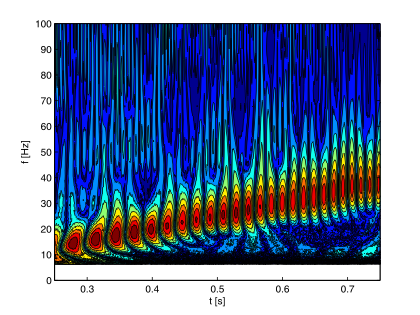Analysis of rolling bearing defects with Wavelet transform
- Forschungsthema:Datenanalyse mit Wavelets
- Typ:Bachelorarbeit
- Datum:WS 2009/10
- Betreuung:
F. Fritz
D. Takács - Bearbeitung:
Máté Rangics
- Links:nachfolgende Arbeit: Wavelets und Hüllkurvenanalyse
ähnliche Arbeit: Analyse von Lagerschäden mit Wavelets
vorangegangene Arbeit: Modellierung von Schäden -
Rolling bearings are commonly used machine parts. The lifetime of the machine usually depends on the condition of the bearing. In the last years, bearing condition monitoring, the ,,vibration monitoring” became the most reliable tool to detect failures, without stopping the machine.
It is very important to monitor the condition of the rolling bearings, and to know the signs of the defects, before it causes catastrophic consequence. Vibratory analysis can
give useful information about bearing malfunctions before they cause a bigger problem.Fast Fourier Transform was the first method to detect defects, with monitoring the bearing defect frequencies in the frequency domain view. As the numerical methods got faster, other methods has became available. One of these methods is the Wavelet transform, which gives good time and frequency resolution. With the wavelet transform, we can use the frequency and the time domain view together.This thesis describes, how the Wavelet transform can be used to detect the bearing harms. First, the signal and the vibratory analysis methods are summarized. Than, the mathematical background of the Wavelet transform introduced and compared to the Fourier Transform and Short-time Fourier Transform through test example. Later, a
simple mechanical model is used to investigate the different type of rolling bearing defects.
TheWavelet Transform is applied to analyse of ideal defected, numerically generated time signals. Real, measured vibration signals are also studied to demonstrate that Wavelet technique is very efficient in rolling bearing defect detection.
